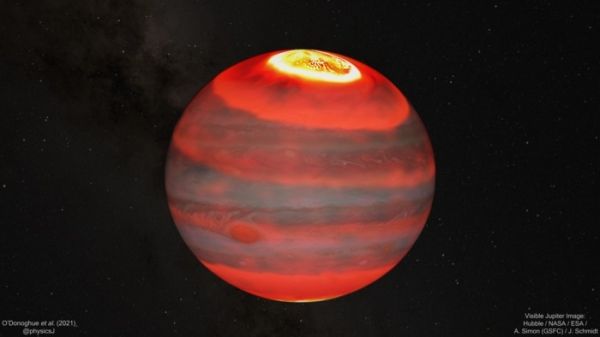New research published in Nature has revealed the solution to Jupiter’s ‘energy crisis’, which has puzzled astronomers for decades.
Space scientists at the University of Leicester worked with colleagues from the Japanese Space Agency (JAXA), Boston University, NASA’s Goddard Space Flight Center and the National Institute of Information and Communications Technology (NICT) to reveal the mechanism behind Jupiter’s atmospheric heating.
Now, using data from the Keck Observatory in Hawai’i, astronomers have created the most-detailed yet global map of the gas giant’s upper atmosphere, confirming for the first time that Jupiter’s powerful aurorae are responsible for delivering planet-wide heating.
Dr James O’Donoghue is a researcher at JAXA and completed his PhD at Leicester, and is lead author for the research paper.
Read more at University of Leicester
Image: Jupiter is shown in visible light for context underneath an artistic impression of the Jovian upper atmosphere’s infrared glow. The brightness of this upper atmosphere layer corresponds to temperatures, from hot to cold, in this order: white, yellow, bright red and lastly, dark red. The aurorae are the hottest regions and the image shows how heat may be carried by winds away from the aurora and cause planet-wide heating. (Credit: J. O'Donoghue (JAXA)/Hubble/NASA/ESA/A. Simon/J. Schmidt)


